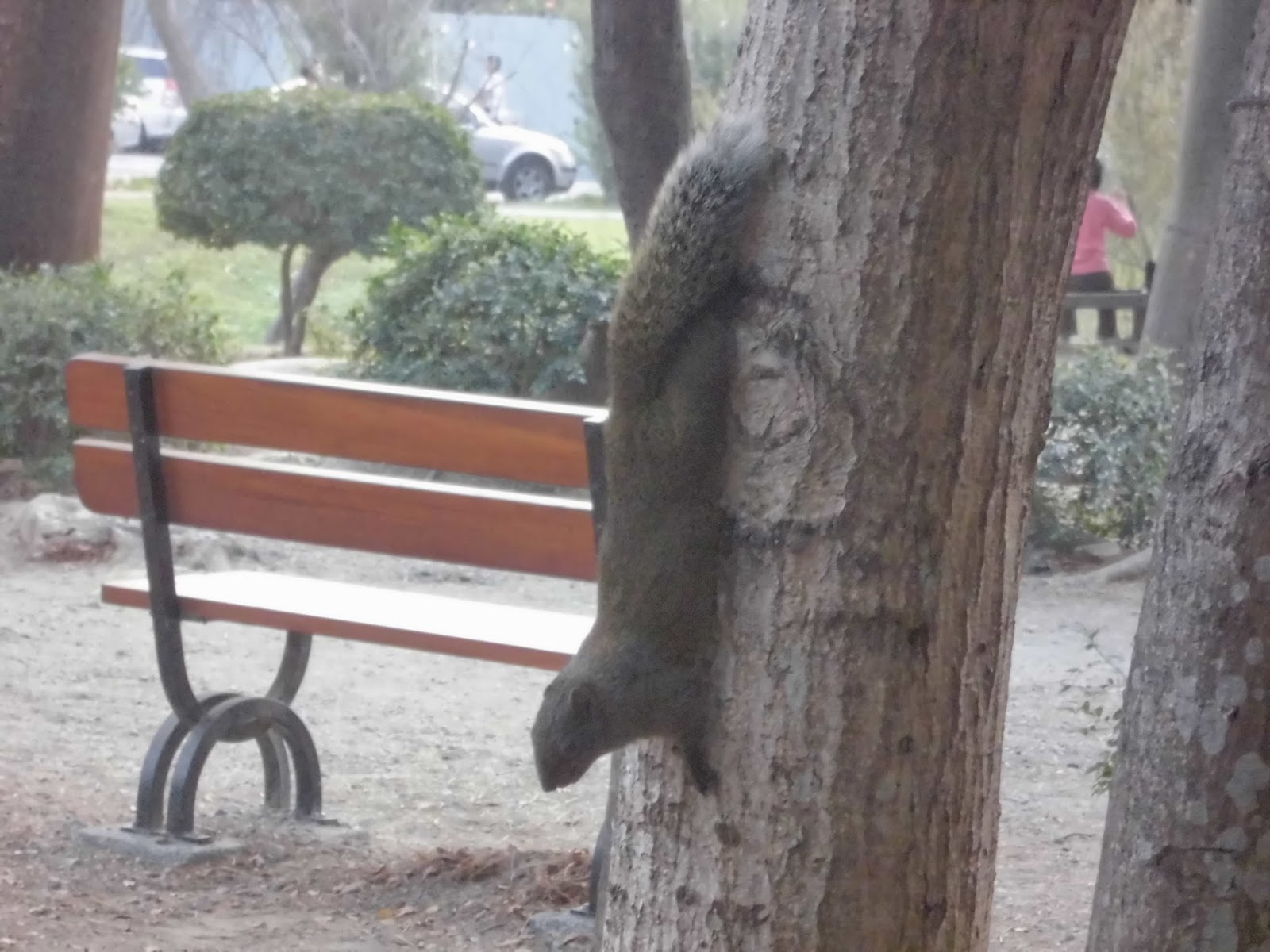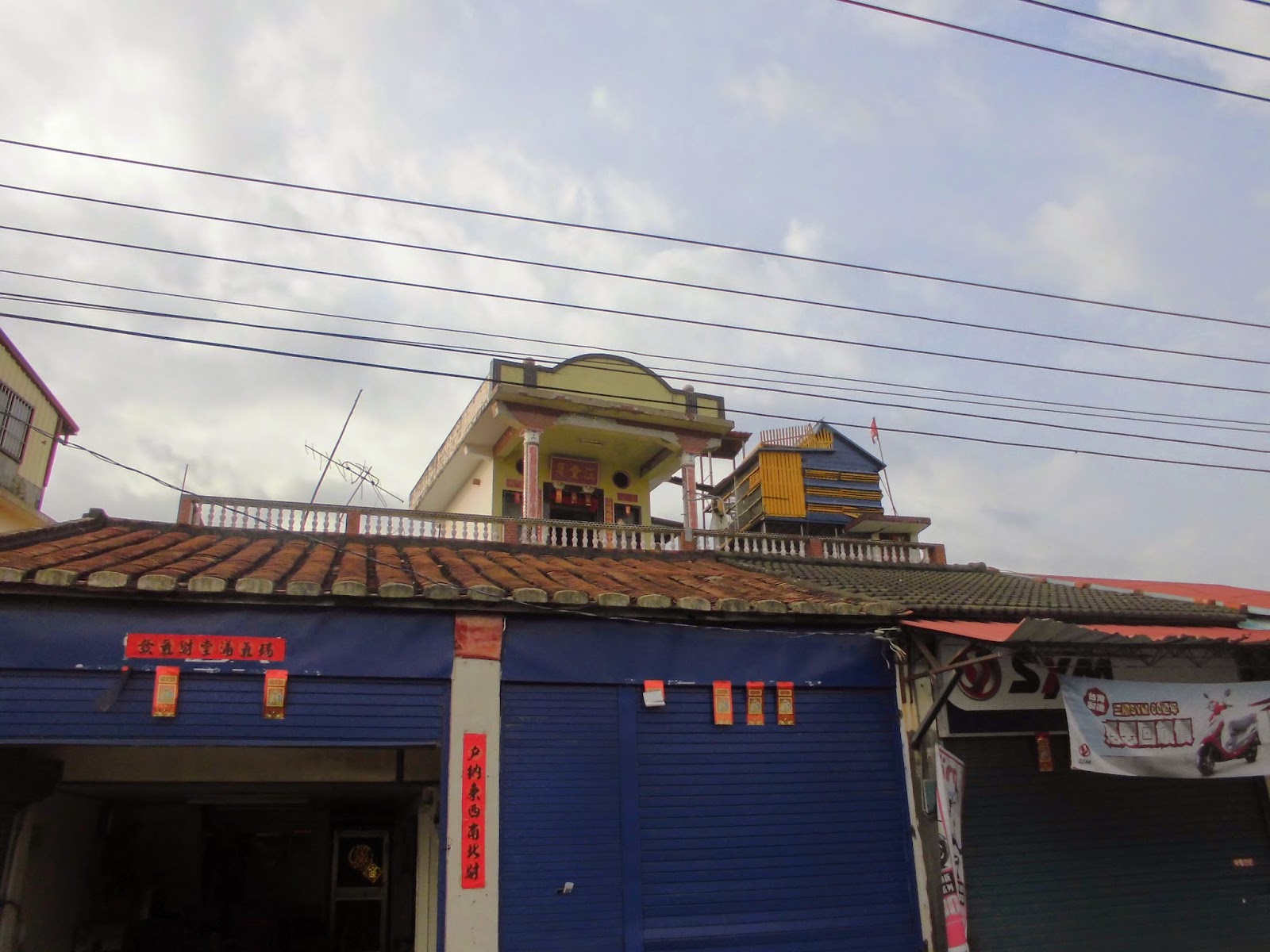Wednesday, April 30, 2014
Saturday, April 26, 2014
Old Army Barrack?/元陸軍の寮/陸軍營地
There's this old building that I've passed by a million times, and the other day I noticed that there was a small stele in front of it. I don't know any details about it, but it appears to have been an army building back in the day. Maybe a barrack or something? It's on the south side of Gongyuan North Road, just to the west of Tainan Park. Actually, looking at a map online, I realized that there's a big section of green in that area (in other words, few buildings and many trees) so there may have been an army base of some sort here in the past. I took a couple photos of the lot on the side of the road, but there isn't much to see aside from what I assume were at one point handsome brick walls.
公園北路の南側(台南公園よりちょっと西に行ったところ)古い塀がある。何回も通ったことはあるが、この間初めて存在に気付いて、見てみたら、「陸軍営地」と書いた石碑があった。詳しいことは分からないが、恐らく陸軍基地か、陸軍の寮がここにあったかもしれない。地図で見てみたら、この辺りは建物が少なくて、木が多いということにも気付いた。だから、それは全部廃墟された基地なのではないかと予測した。写真は一応撮って来たが、現在道沿いの所には塀しか遺っていない。
在公園北路(在馬路的南面,臺南公園以西)我看到一棟廢墟的建築。其實,看起來建築已經沒有了,只有周圍的牆而已。我有好多次看過,但是最近才注意到有一方石碑,寫「陸軍營地」。應該以前這裡是一個陸軍基地吧?還是陸軍的宿舍?
"Army Camp" No details given.「陸軍営地」詳細なことは書かれていない。
「陸軍營地」拜託!多寫一點!以前這裡是甚麼地方?
The wall and door to the plot.
Inside the walls, there are now lots of trees growing up. I wrote "building" at the top of this post, but there actually doesn't appear to be any building left now. Just the walls and gate.
敷地内には建物が無い様子で、椰子の木が生えてきた。
現在像裡面的建築沒了,只有椰樹而已。
Wednesday, April 23, 2014
Barclay Park/バークレー記念公園/巴克禮紀念公園
There's a nice park of decent size south east of the train station in Tainan. It used to have the romantic name "Park Number 18", but a while back it was fixed up and renamed "Barclay Memorial Park". The namesake is a missionary, Thomas Barclay, from Scotland. He moved to Tainan to do missionary work when he was about 25, and he stayed there for the rest of his life. He was in Tainan when the Qing Dynasty ceded control of Taiwan to Japan, and he negotiated a deal whereby rebels against Japanese control accepted Japanese rule, and in exchange the Japanese military didn't slaughter everyone.
台南駅の東南に、「バークレー記念公園」という公園がある。以前は「公園18番」という真面目な名前がついたらしいが、最近改善も改名もされた。バークレーは「トーマスバークレー」というスコットランドの宣教師だ。清朝時代から日本時代にかけて台南に住んで活躍した。台湾閩南語の新聞を出版した(台湾での最初の新聞)、また日本が台湾を清朝から譲って貰った時、バークレーは台南にある反乱者と日本軍の間で調停者として活躍して、最終的に台南は日本統治を認めて、日本軍は反乱者の罰を免除して、平和が守られた。
在臺南站東南部有一個公園,叫做「巴克禮紀念公園」。以前它叫「18號公園」。(怎麼這麼無聊!)但是最近是改善的,所以名字也變成這個紀念巴克禮的名字。巴克禮是誰?他是來臺南當傳教士的人。他開始發表臺灣第一個報子。還有日本軍來臺南的時候,他當調停者,也讓臺南的反亂者停反亂了,也讓日軍不罰反亂者了。
There were some pretty flowers out when I visited the other day.この時、綺麗な花が咲いていた。
These are all well-respected government officials in this photo. Really. It was from some sort of event, so I guess that excuses them from dressing up as butterflies and owls. I guess.
市長などの社会的な位地が高いおっさん達がイベントに参加して、こんな格好した。やるな。
這些人都是政治家。參加這個活動,被拍這麼糗的照片。
Strange trees. What are these? I've never seen anything like these before.
こんな木初めて見た。もしかいて外来種かな?凄く変わっている。
不知道這些樹是甚麼種類。向來都沒有看過。
Squirrels in Tainan look different than those in NYC, but they are still ninjas. This one was calmly hanging out on the side of this tree.
ニューヨークの栗鼠はもっと灰色いけど、台南の栗鼠とする事が全く一緒だ。スパイダーマンみたいに木の株にくつろいだりするのだ。
臺南的松鼠跟紐約的比起來比較黑黑的。應該是不一樣的種類吧。
On the other side of the wall in the background is a school.
女の子が兎を連れて来た。周りに犬がけっこういたのに、兎は意外と落ち着いていた。
有的女孩帶兔子來了。
Some girl brought her pet rabbit.
Sunday, April 20, 2014
Ducks as far as the Eye Can See/鴨祭!/到處都是鴨
我最近知道烤鴨的魅力,常常去高雄,或是臺南的飯館吃。這裡是在臺南的一家。
最近北京ダックに嵌まっている。高雄や台南にあるいくつかの店に行ってみた。こちらは台南にある一軒だ。うまい!My eyes have been opened to the joys of roast duck recently. I've gone to a couple of places in Kaohsiung and Tainan to eat it. This is a restaurant in Tainan. Good stuff!
Wednesday, April 16, 2014
Meinong Day Trip/美濃の日帰り旅/美濃的一天
I went to Meinong last weekend. Meinong is a small town in the greater Kaohsiung area. It's historically been a Hakka town. (The Hakka are considered a sub-group of Han Chinese. They have their own language, which preserves many features of ancient Chinese I've heard. They're also one of the groups of Chinese who have moved overseas--to places like Taiwan--in large numbers, well out of proportion to their percent of the population in China.)
Hakka cuisine is als really good. The best part of this trip was lunch, of which I have no photos because I don't take photos of food. However, we can see a little bit of what Meinong looks like in the photos below. Keep in mind, I got a late start on this day, so this is not a comprehensive look at Meinong.
美濃は高雄にある村落だ。昔から煙草を作って、「客家」という民族がたくさん住んでいるところとして有名だ。客家といのは漢族の中の民族とされている。客家語もあるし、特別な料理法もある。中国の比較的に人口密度が高くて、土地がないところに住んでいるので、母国での生活が辛くて海外に移った客家もかなり多い。
上禮拜天,我去美濃玩。美濃在高雄市裡,但是離城市中央很遠,在比較鄉下的地方。因為客家人很多所以去美濃最好玩是吃客家菜。除了吃飯以外,我也欣賞看看美濃的風景。(不過,這天我起床晚一點,所以很多地方都沒看。)
I thought these rounded corner buildings were interesting.我喜歡這些圓圓的房子。
Upon leaving Meinong's small town center, you quickly run into rice fields.
ちょっとだけ繁華街から離れたら、もうこういう感じだ。
只要離美濃的中心部一點,就到稻田了。
和風のデザインも取り入れている家だ。和風とは言えないけど、ちょっとそういうのも入っているって感じかな。
Taiwanese Amish?
Farming for Betel nuts and Coconuts.
看到椰子和檳榔就知道在南臺灣。
美濃橋。両端には猿の銅像がある。
美濃橋。有兩隻猴子。
A historic bridge in Meinong that is decorated with monkey statues on either end.
The newer bridge next to the historic one.
向こうに最近作られた橋がある。
These birds were all over in the rivers around here.
The monkey on the other side.
This bridge was built during the Japanese colonial period. I complained about Taiwan's year system in my post about going to Cishan, but here's another reason why its stupid. They put up this plaque saying that the bridge was built in "Minguo Year 19". (That's 1930 in normal years.) In 1930 Taiwan was a colony of Japan, and no one on the entire island was using Minguo years. (They were using the equally silly Japanese system of dating based on the reigning emperor.) The bridge probably originally had a plaque here announcing that it was constructed in "Showa Year 5". The reality is, while there was a "Minguo 19" in China, in Taiwan there never was a Minguo 19. The Minguo system didn't get introduced until the Republic of China government took over Taiwan in 1945 (Minguo 34!)
実は、この橋は日本植民地時代に作られた。下の石碑を見たら、「民国19年」って書いているけど、民国19年というのは、1930年になる。恐らく、ここは元々「昭和5年」と書いてあっただろう。台湾は1945年まで日本に統治されたので、民国1年から33年までは台湾と縁がない年号になっている。
這座橋是日本時代做的。現在寫「民國十九年」,但是因為臺灣以前是日本殖民地的關係,原來臺灣沒有從民國一到民國三十三年,所以應該這裡原本寫「昭和五年」。
This sign was mysterious. I can understand banning cars (not that a car would fit on the bridge anyway) and motorcycles (they were driving across anyway) but banning bikes, and even pedestrians!? If even pedestrians can't use the bridge, who is it for? Monkeys? (Serious guess: Maybe the bridge used to be derelict and they put up this sign to stop people from dying. Then, after they fixed up the bridge they didn't take down the sign. I have no idea though.)
橋の横にこの標識があった。車もバイクも自転車も、いや、歩行者までも駄目なら、この橋はいったい誰が使えるのか?猿?(分からないが、もしかしてこの橋は以前、一時的にぼろぼろなって、当時橋を渡ることが禁止されたかもしれない。今は渡れるけど。)
車子,機車,腳踏車,至於行人都不可以走過。誰用得著?
Reusing an old building.
廃墟に作物
Totoro!
小学校前のトトロ。
An old, Minnan-style house.
閩南式の民家
住在臺灣南部的人可能不會覺得閩南房子好酷,但是對像我外國人來說,非常特殊,有趣。
I like the bricks on the roof.
Snail eggs, I was told.
このピンク色のやつはタニシの卵らしい。
蝸牛的卵子。
The Meinong Town registration center. (Some sort of government office.) It still says "Kaohsiung County, Meinong Town" on it even though all of the counties were merged into cities a couple years back and Meinong is currently "Kaohsiung City, Meinong District". This leads me to believe that the building is not being used as a government office anymore.
このビルは「高雄県美濃鎮」と書いているが、「鎮」は「村」みたいな意味になっている。現在、台湾の県と鎮は全部なくなって、県が市に合併されて、鎮が「区」になった。この看板が変わっていないとは多分このビルはもう政府に使用されていないのではないかと思う。
還寫「高雄縣美濃鎮」
"If it's not tasty, you don't have to pay!"
「美味しくなければ、お金は要らない」
*mrowr*
I thought the design of these balconies was interesting.
バルコニーのデザインはちょっと気に入った。
Tic Tac Toe building
この建物も日本時代に建てられたのかな!?
這棟也看起來是日本時代的。
That's it for Meinong!
終わり。
Subscribe to:
Comments (Atom)




















































































